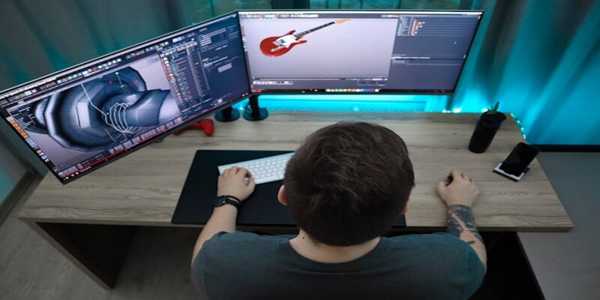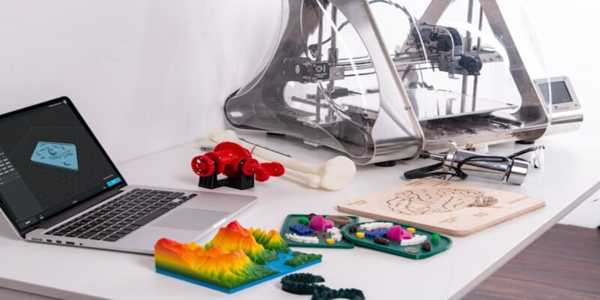How 3D Printing Is Revolutionizing Electronics Manufacturing in 2025
Adding a design with proper directions into a system and printing a physical model seemed impossible a few years ago. However, now, 3D printing is the talk of the town.
Adding a design with proper directions into a system and printing a physical model seemed impossible a few years ago. However, now, 3D printing is the talk of the town. It is revolutionizing electronics by crafting components that used to require highly sophisticated methods in the past. Let's learn about it in detail.
Advancements in 3D Printing Technologies
The progress of 3D printing technologies has directly influenced the electronics manufacturing industry. A few years ago, 3D printing was mainly used for rapid prototyping.
Today, it's a viable option for producing functional parts. Methods like Fused Deposition Modeling (FDM) and Stereolithography (SLA) offer accuracy at a fraction of the cost.
These technologies are now routinely used to create small, detailed components like circuit boards and microchips. As a result, manufacturers can test designs, make modifications, and print final products quickly.

Customization and Rapid Prototyping
One of the most exciting features of 3D printing in electronics manufacturing is the ability to customize parts. Companies can now design and produce components explicitly tailored to their needs. Rapid prototyping allows engineers to create physical models in a matter of hours instead of weeks.
This fast production cycle helps speed up the design process, enabling companies to bring new products to market faster. The ability to print on demand also reduces the need for extensive inventories of parts, which can be costly and take up space.
Cost Reduction and Supply Chain Efficiency
3D printing has the potential to reduce manufacturing costs drastically. Traditional methods require expensive molds, tooling, and labor-intensive processes. With 3D printing, components are built layer by layer, using only the necessary material. This leads to less waste and lower production costs.
Furthermore, the ability to print components as needed helps reduce inventory and storage costs. The technology can streamline the supply chain by allowing parts to be printed at the point of need, minimizing shipping and storage expenses.
Integration with Nanotechnology
The marriage of 3D printing and nanotechnology promises to open up even more opportunities for electronics manufacturing. Nanotechnology involves manipulating matter on a molecular scale, and when combined with 3D printing, it can create even smaller and more precise components.
For example, researchers are experimenting with 3D-printed circuits incorporating nanomaterials, which offer better conductivity and flexibility. This could enable the creation of advanced electronics like flexible displays, microchips, and more, all printed with unprecedented precision.
Environmental Impact and Sustainability
Sustainability is a growing concern for many industries, and 3D printing has the potential to address this issue in electronics manufacturing. The environmental impact is significantly lower by reducing waste through precise material usage and enabling on-demand production.
Traditional manufacturing methods often result in excess material that gets discarded, while 3D printing uses precisely what is needed. Additionally, 3D printing could allow the recycling of old electronic components, turning waste into new products.
This technology's potential to reduce carbon footprints and minimize waste makes it a key player in environmentally friendly manufacturing practices.
Challenges and Considerations in 3D Printing for Electronics
Despite its many advantages, 3D printing in electronics manufacturing has challenges. For one, a limited selection of materials still works well for electronics.
Conductive materials like copper or gold must be incorporated into the 3D printing process, and significant progress is still being made in this area. Durability and reliability are critical issues, as 3D-printed components must meet the same high standards as traditional manufacturing methods. While the technology is advancing, these hurdles are not yet wholly overcome.
Future Outlook: The Role of AI in 3D printing
As 3D printing evolves, artificial intelligence (AI) will likely play a more significant role. AI can optimize the design of parts before they are printed, ensuring they are efficient and cost-effective.
It can also help predict potential problems during production, reducing errors and waste. Machine learning algorithms could even analyze data from printed components to improve future designs.
Integrating AI with 3D printing is an exciting area of growth that will help streamline production and make manufacturing even more efficient.

What's Next? 3D Printing and IoT Integration
Shortly, 3D printing is expected to seamlessly integrate with the Internet of Things (IoT) for smarter manufacturing. IoT can help track and monitor the printing process, providing real-time feedback on efficiency and quality.
Smart factories equipped with IoT sensors can alert manufacturers to potential issues before they arise, reducing downtime and enhancing productivity.
3D printing's integration with IoT could create highly automated, efficient manufacturing environments, allowing for quicker, better, and more cost-effective electronics production.
Conclusion: 3D Printing's Impact on Electronics Manufacturing
3D printing is fundamentally transforming the electronics manufacturing industry. The ability to rapidly prototype, customize components, reduce costs, and streamline production is changing the game for manufacturers. With further advancements in materials, technology, and AI integration, the future of electronics manufacturing looks incredibly promising. As technology continues to mature, 3D printing will likely become a key driver of innovation, enabling manufacturers to create cutting-edge products faster and more efficiently than ever before. Thanks for the Read!